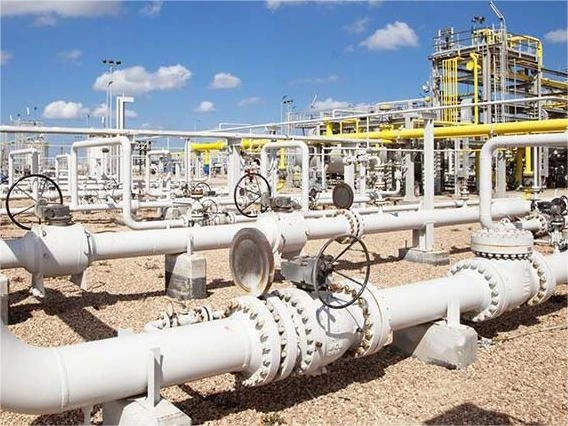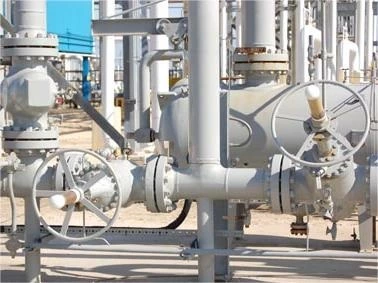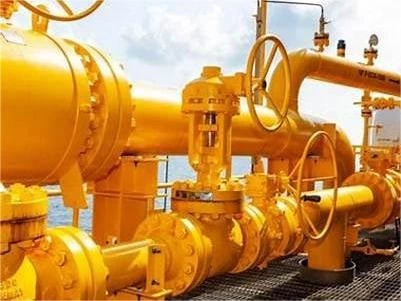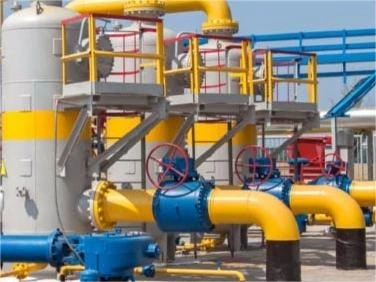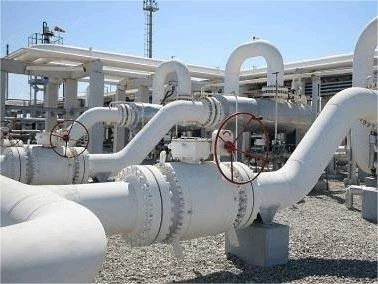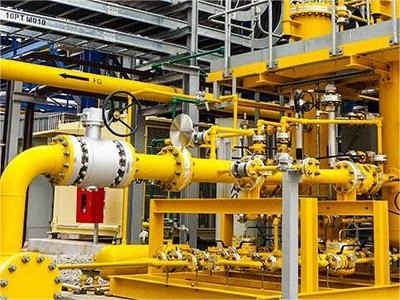Valve Seatings
The effectiveness of the seating and the subsequent sealing of a valve are very important factors in the selection of a valve for a specific process function. Valve seatings are the portions of the seat and closure member that contact each other for closure. Because the seatings are subject to wear during the making of the seal, the sealability of the seatings tends to diminish with operation.
Metal Seatings
Operational wear is not limited to soft seated valves and it can be experienced with metal-seated valves if the process system is carrying a corrosive fluid or a fluid that contains particles. Metal seatings are prone to deformation by trapped fluids and wear particles. They are further damaged by corrosion, erosion, and abrasion. If the wear-particle size is large compared with the size of the surface irregularities, the surface finish will deteriorate as the seatings wear in. On the other hand, if the wear- particle size is small compared with the size of the surface irregularities, a coarse finish tends to improve as the seatings wear in. The wear-particle size depends not only on the type of the material and its condition, but also on the lubricity of the fluid and the contamination of the seatings with corrosion and fluid products, both of which reduce the wear-particle size.
The seating material must therefore be selected for resistance to erosion, corrosion, and abrasion. If the material fails in one of these requirements, it maybe completely unsuitable for its duty. For example, corrosive action of the fluid greatly accelerates erosion. Similarly, a material that is highly resistant to erosion and corrosion may fail completely because of poor galling resistance. On the other hand, the best material may be too expen- sive for the class of valve being considered, and compromise may have to be made.
Table 2-1 gives data on the resistance of a variety of seating materi- als to erosion by jets of steam. Stainless steel AISI type 410 (13 Cr) in heat-treated form is shown to be particularly impervious to attack from steam erosion. However, if the fluid lacks lubricity, type 410 stainless in like contact offers only fair resistance to galling unless the mating com- ponents are of different hardness. For steam and other fluids that lack lubricity, a combination of type 410 stainless steel and copper-nickel alloy is frequently used. Stellite, a cobalt-nickel-chromium alloy, has proved most successful against erosion and galling at elevated temperatures, and against corrosion for a wide range of corrosives.
API Std 600 lists seating materials and their combinations frequently used in steel valves.
Table 2-1
Erosion Penetration
Resulting from the impingement of a 1.59 mm (1/16 inch) diameter jet of saturated steam of 2.41 MPa (350 psi) pressure for 100 hours on to a specimen 0.13 mm (0.005 inch) away from the orifice:
Class 1— less than 0.0127 mm (0.0005 inch ) penetration
Stainless steel AISI tp 410 (13Cr) bar forged and heat treated
Delhi hard (17Cr)
Stainless steel AISI tp 304 (18Cr, 10Ni) cast
Stellite No. 6
Class 2—0.0127 mm (0.0005 inch ) to 0.0254 mm (0.001 inch ) penetration
Stainless steel AISI tp 304 (18Cr, 10Ni) wrought
Stainless steel AISI tp 316 (18Cr, 12Ni, 2.4Mo) arc deposit
Stellite No. 6 torch deposit
Class 3—0.0254 mm (0.001 inch ) to 0.0508 mm (0.002 inch ) penetration
Stainless steel AISI tp 410 (13Cr) forged, hardened 444 Bhn
Nickel—base copper—tin alloy
Chromium plate on No. 4 brass (0.0254 mm = 0.001 inch)
Class 4—0.0508 mm (0.002 inch ) to 0.1016 mm (0.004 inch ) penetration
Brass stem stock
Nitralloy 2 Ni
Nitalloy high carbon and chrome
Nitralloy Cr—V sorbite—ferrite lake structure, annealed after nitriding 950 Bhn
Nitralloy Cr—V Bhn 770 sorbitic structure
Nitralloy Cr—Al Bhn 758 ferritic structure
Monel modifications
Class 5—0.1016 mm (0.004 inch ) to 0.2032 mm (0.008 inch ) penetration
Brass No. 4, No. 5, No. 22, No. 24
Nitralloy Cr—Al Bhn 1155 sorbitic structure
Nitralloy Cr—V Bhn 739 ferrite lake structure
Monel metal, cast
Class 6—0.2032 mm (0.008 inch ) to 0.4064 mm (0.016 inch ) penetration
Low alloy steel C 0.16, Mo 0.27, Si 0.19, Mn 0.96
Low alloy steel Cu 0.64, Si 1.37, Mn 1.42
Ferro steel
Class 7—0.4064 mm (0.016 inch ) to 0.8128 mm (0.032 inch ) penetration
Rolled red brass
Grey cast iron
Malleable iron
Carbon steel 0.40 C
Sealing with Sealants
Certain valves have the facility to periodically introduce sealants into the valve seat and stems to maintain an effective seal over an extended period. The leakage passages between metal seatings can be closed by sealants injected into the space between the seatings after the valve has been closed. One metal-seated valve that relies completely on this sealing method is the lubricated plug valve. The injection of a sealant to the seatings is used also in some other types of valves to provide an emergency seat seal after the original seat seal has failed.
Soft Seatings
Soft seats are very effective, but they have limited use at high tempera- tures and pressures. Manufacturers of proprietary soft seats will state the maximum and minimum design pressures and temperatures for which their products are suitable. Some soft seats are also not suitable for some fluids at certain pressures and temperatures.
In the case of soft seatings, one or both seating faces may consist of a soft material such as plastic or rubber. Because these materials conform readily to the mating face, soft seated valves can achieve an extremely high degree of fluid tightness. Also, the high degree of fluid tightness can be achieved repeatedly. On the debit side, the application of these materials is limited by their degree of compatibility with the fluid and by temperature.
A sometimes unexpected limitation of soft seating materials exists in situations in which the valveshuts off a system that is suddenly filled with gas at high pressure. The high-pressure gas entering the closed system acts like a piston on the gas that filled the system. The heat of compression can be high enough to disintegrate the soft seating material.
Table 2-2 indicates the magnitude of the temperature rise that can occur. This particular list gives the experimentally determined temperature rise of oxygen that has been suddenly pressurized from an initial state of atmospheric pressure and 15。C.4
Heat damage to the soft seating element is combated in globe valves by a heat sink resembling a metallic button with a large heat-absorbing surface, which is located ahead of the soft seating element. In the case of oxygen service, this design measure may not be enough to prevent the soft seating element from bursting into flames. To prevent such failure, the valve inlet passage may have to be extended beyond the seat passage, so that the end of the inlet passage forms a pocket in which the high temperature gas can accumulate away from the seatings.
In designing soft seatings, the main consideration is to prevent the soft seating element from being displaced or extruded by the fluid pressure.
